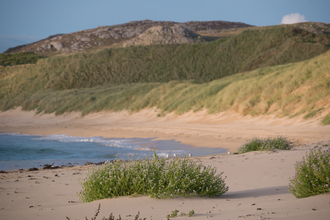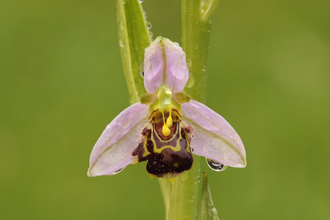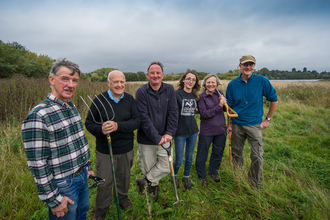©Philip Precey
Yellow-wort
A plant of chalk and limestone grasslands and sand dunes, Yellow-wort has butter-yellow flowers. Its distinctive leaves sit opposite each other, but are fused together around the stem.
Scientific name
Blackstonia perfoliataWhen to see
June to OctoberSpecies information
Category
Statistics
Height: up to 40cmConservation status
Common.



